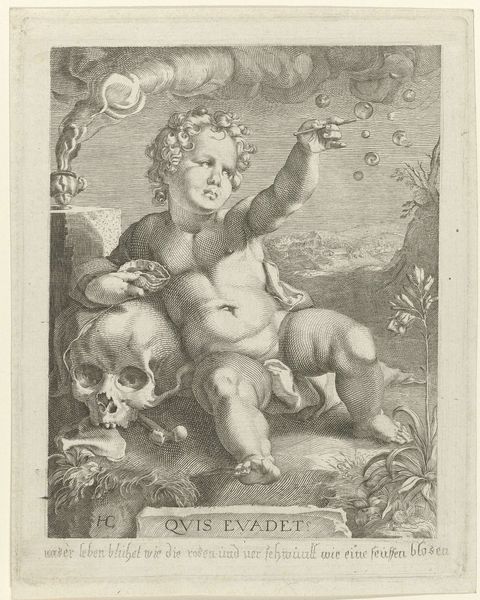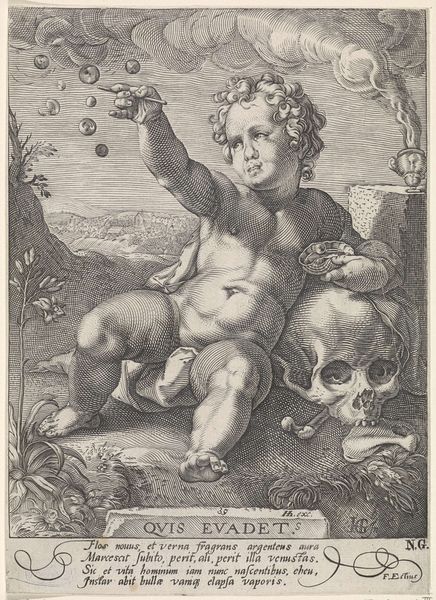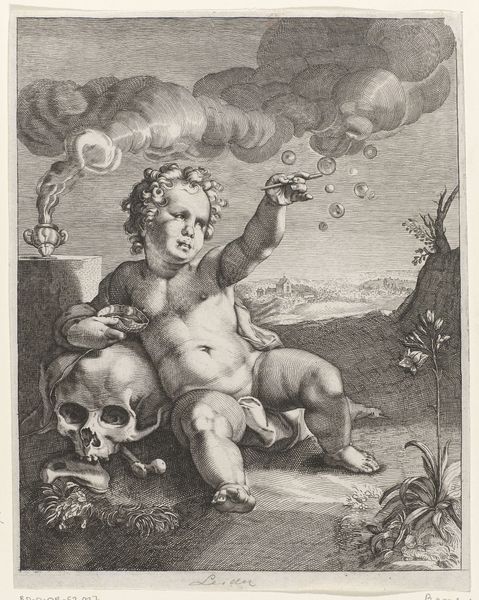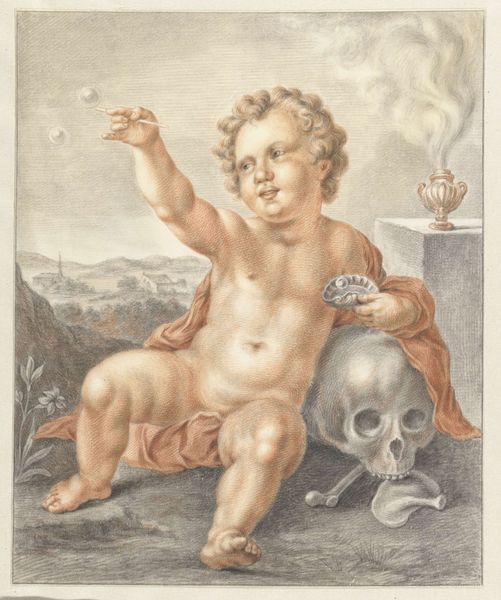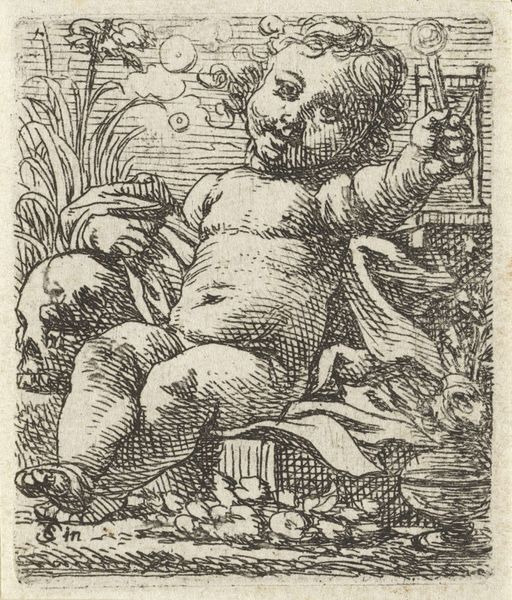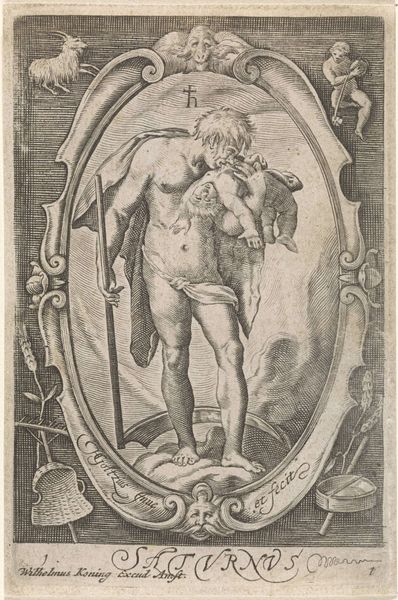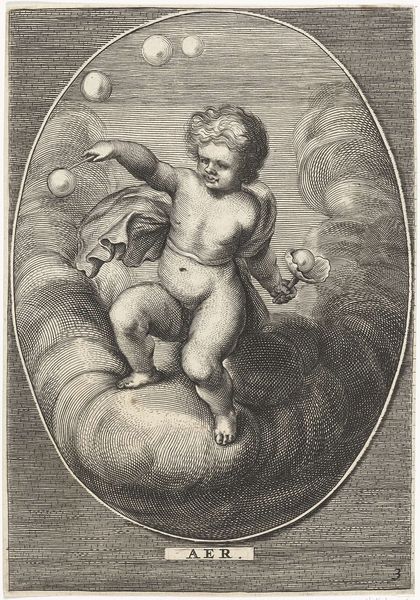
print, engraving
#
allegory
# print
#
caricature
#
mannerism
#
figuration
#
vanitas
#
history-painting
#
engraving
Dimensions: 213 mm (height) x 156 mm (width) (Plademål)
Curator: Hendrick Goltzius crafted this engraving, "Allegory of the Flight of Life (Quis Evadet?)," in 1594. The print resides here at the SMK. My first thought is how unsettling this deceptively cute child is against the starkness of the deathly images surrounding it. Editor: Indeed. The visual tension practically vibrates. The engraver, Goltzius, masterfully balances light and shadow to amplify the image's contrasting themes, doesn't he? Note how the diagonal line created by the arm blowing bubbles leads directly down to the skull. It’s almost theatrical. Curator: Precisely. The Mannerist style is evident, focusing on the artifice, on highly stylized figures contorted in artificial poses, to present abstract philosophical concepts. The child blows ephemeral bubbles of youth near the symbols of mortality—the skull, smoke from the extinguished urn. A classic "vanitas" theme underscoring life's fleeting nature. Editor: It certainly fits into that historical context. Remember, plague, war, famine—death was ubiquitous. These images served as potent reminders and moral correctives in Dutch society. And consider "Quis Evadet?", the title means "Who shall escape?". Goltzius clearly connects individual mortality with historical destiny. The landscape with a distant town in the background speaks to collective fate. Curator: And yet, consider the execution. The incredibly fine, almost obsessive detail of the lines and curves. Every muscle, every fold in the cloth is given such precise attention. He uses line weight variation to define form. Semiotically, the skull does not just stand in opposition of youth, but contrasts against the plump infantile shape. The message is heightened not by simple comparison, but complex counter positioning. Editor: A fitting complexity, given how public art can offer individuals varied opportunities to encounter these existential questions. Prints like these had a crucial didactic function as widely disseminated tools of engagement in Early Modern Europe. I find its ability to create conversation still compelling today. Curator: For me it underscores how technique and content are inextricably linked to form a complete work. Goltzius delivers the message through masterful control of form and line. Editor: And reminds us of our shared destiny along the way.
Comments
No comments
Be the first to comment and join the conversation on the ultimate creative platform.
